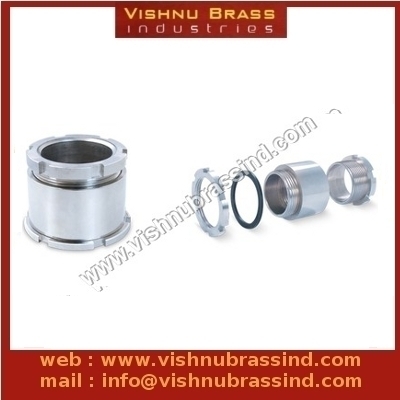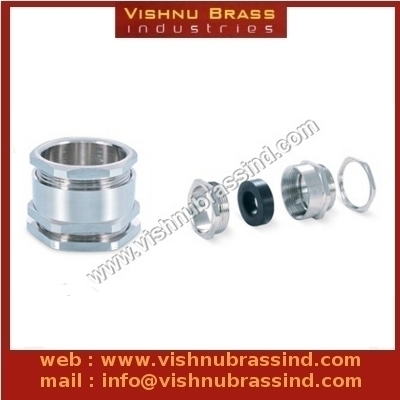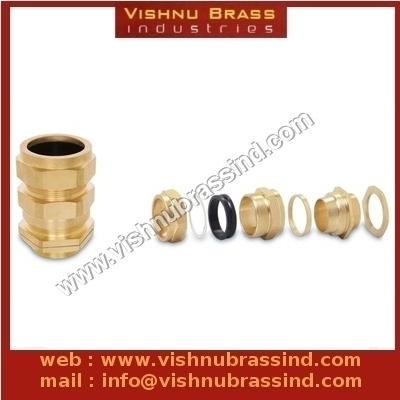
A1 A2 Cable Gland
Price 50-400 INR/ Piece
A1 A2 Cable Gland Specification
- Locking Type
- Hexagonal lock nut
- Install Type
- Threaded mounting
- Tensile Strength
- High mechanical strength
- Diameter
- Cable acceptance range from 10 mm to 63 mm
- Operating Temperature
- -20C to +80C
- Rated Temperature
- -20C to +80C
- Dielectiric Strength
- 2 kV
- Insulation
- Provided by inner nylon sealing ring
- Usage & Applications
- Industrial, Commercial, Panel building, Machinery
- Weight
- Varies by gland size
- Features
- Weather-proof, Corrosion-resistant, Dust-tight, Flame retardant
- Cable Type
- Unarmoured cable
- Product Type
- A1 A2 Cable Gland
- Length
- Customized as per cable size
- Voltage
- Rated up to 1000V
- Insulation Material
- Nylon or Polyamide
- Application
- Cable termination for unarmoured cables in electrical installations
- Jacket Material
- Brass with nickel plating
- Storage Temperature
- -30C to +85C
- Connector Color
- Metallic
- Jacket Color
- Metallic gold/silver
- Dimension (L*W*H)
- Varies by size (e.g., M16 to M63, consult datasheet)
- Color
- Metallic Brass
- Material
- Brass
- Size
- M16, M20, M25, M32, M40, M50, M63 (others on request)
A1 A2 Cable Gland Trade Information
- Minimum Order Quantity
- 500-1000 Pieces
- Supply Ability
- 1000 Pieces Per Day
- Delivery Time
- 20-45 Days
About A1 A2 Cable Gland
Being the reputed manufacturer, exporter and supplier, we have brought forward an extensive range of A1-A2 Cable Gland. The offered gland is extensively used in telecommunication industry for connecting unarmored cables. with the aid of sophisticated techniques, our experienced professionals use the best quality raw materials to manufacture this gland. In addition to this, the provided A1-A2 Cable Gland can be bought from us in different specifications at reasonable prices.
Superior Ingress Protection
Designed for harsh environments, the A1 A2 Cable Gland is rated IP66/IP68, ensuring complete protection against dust and powerful jets of water or immersion. Panels and external enclosures can achieve weather-proof, corrosion-resistant cable entries, maintaining electrical safety and performance in diverse conditions. The robust parallel metric thread enables precise, reliable installation on a wide range of enclosures and gland plates.
Versatile Application Range
Compatible with industrial, commercial, and panel building applications, these glands can accept a variety of unarmoured cable sizes (10 mm to 63 mm) and are available in trade sizes M16 to M63. The inner nylon or polyamide sealing rings guarantee effective insulation, while the hexagonal lock nut ensures secure, threaded mounting, supporting ease of installation and maintenance.
FAQs of A1 A2 Cable Gland:
Q: How should the A1 A2 Cable Gland be correctly installed on an electrical panel?
A: To install the A1 A2 Cable Gland, select the appropriate metric size for your cable and panel entry. Insert the gland through the panel or gland plate, secure it with the hexagonal lock nut, and ensure the inner and outer sealing rings are properly seated for optimal sealing. Tighten to the recommended installation torque specified for the gland size to maintain IP66/IP68 protection.Q: What is the benefit of using inner and outer sealing rings in this cable gland?
A: The inner and outer sealing rings ensure double-layered protection against ingress of liquids and dust, improving the overall weather-proofing and durability of the cable entry. This dual sealing system also provides strong mechanical grip on the cable, preserving both electrical insulation and mechanical strength.Q: When is it necessary to use single versus double compression gland entries?
A: Single compression glands are typically sufficient for general indoor or panel applications where moderate environmental protection is required, while double compression entries are better suited to harsher environments demanding enhanced sealing and strain relief, such as outdoor industrial settings.Q: Where can A1 A2 Cable Glands be used most effectively?
A: These glands are ideal for terminating unarmoured cables in industrial machinery, commercial buildings, electrical panels, and machinery enclosures. Their IP66/IP68 rating makes them especially useful where high ingress protection and resistance to chemical or UV exposure are crucial.Q: What process should be followed to select the correct gland size for a specific cable?
A: Determine the outer diameter of your unarmoured cable, then refer to the manufacturers sizing chart to choose a gland with an appropriate cable acceptance range (10 mm to 63 mm). Ensure compatibility with panel or gland plate entry thread size (M16 to M63), and select the required compression type and finish.Q: How does the IP66/IP68 rating benefit the longevity of cable installations?
A: By meeting IP66/IP68 standards, the gland protects cables and electrical components from dust, powerful water jets, and brief periods of immersion. This extends the life of installations in challenging weather or washdown environments commonly found in industrial and outdoor locations.

Price:
- 50
- 100
- 200
- 250
- 500
- 1000+
More Products in Brass Cable Gland Category
Marine Cable Glands
Price 50-400 INR / Piece
Minimum Order Quantity : 5001000 Pieces
Application : Other, Marine cable sealing, Shipboards, Offshore platforms
Connector Color : Silver
Armored Material : Optional steel wire armor
Insulation Material : Other, Rubber, Silicone, EPDM
PG Cable Glands
Price 50-400 INR / Piece
Minimum Order Quantity : 5001000 Pieces
Application : Other, Electrical control boxes, junction boxes, machines, outdoor/indoor cable installations.
Connector Color : Grey/Black
Armored Material : Not Applicable.
Insulation Material : Other, Nylon PA66
CW Cable Gland
Price 50-400 INR / Piece
Minimum Order Quantity : 5001000 Pieces
Application : Other, Outdoor and indoor armoured cable connections, power distribution, control panels, junction boxes
Connector Color : Metallic (natural brass finish or nickelplated)
Armored Material : Steel wire/strip (SWB/SWA, gland is compatible)
Insulation Material : Other, PVC (used with the cable)
Aluminum Cable Gland
Price 50-400 INR / Piece
Minimum Order Quantity : 5001000 Pieces
Application : Other, Securing and sealing cables entering enclosures, electrical panels, machines
Connector Color : Natural aluminum finish
Armored Material : Aluminum body, compatible with armored cables
Insulation Material : Other, Standard noninsulated, suitable for outdoor/indoor use
 |
VISHNU BRASS INDUSTRIES
All Rights Reserved.(Terms of Use) Developed and Managed by Infocom Network Private Limited. |
 English
English Spanish
Spanish French
French German
German Italian
Italian Chinese (Simplified)
Chinese (Simplified) Japanese
Japanese Korean
Korean Arabic
Arabic Portuguese
Portuguese


 Send Inquiry
Send Inquiry





